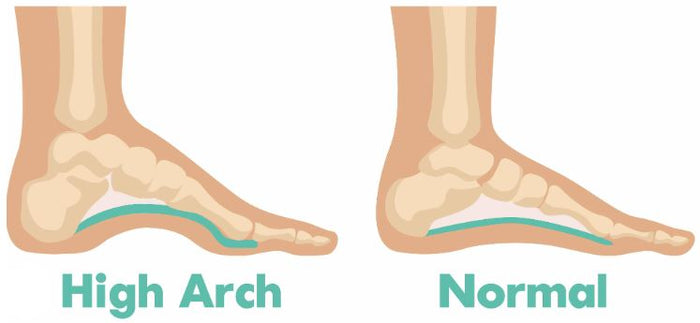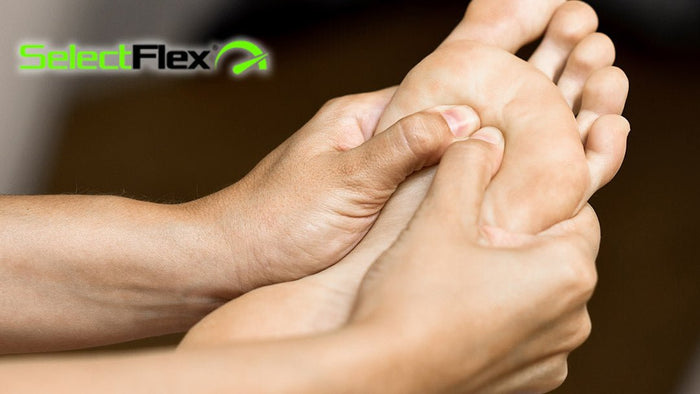THE IMPORTANCE OF FOOT CARE FOR PEOPLE WITH HIGH ARCHES

People with high arches, also known as cavus foot, have a unique set of foot and ankle conditions that require special attention and care. High arches can lead to a variety of problems, including pain, instability, and increased risk of injury (Foot Health Facts). It is important for people with high arches to take steps to properly care for their feet to prevent these issues.
- Wear the right shoes: Wearing shoes that provide adequate support and stability is crucial for people with high arches. Look for shoes with a sturdy heel counter and a firm midsole. Also, a well-cushioned sole is important to provide extra shock absorption. Avoid shoes with a high heel or those that are too flexible.
- Use orthotics: Orthotics, or shoe inserts, can help correct the alignment of the foot and provide extra support to the arch. They can be purchased over-the-counter or custom-made by a podiatrist. Custom-made orthotics are tailored to the specific shape and needs of your foot, providing the best support and stability.
- Strengthen the muscles in your feet and legs: Strong muscles in your feet and legs can help support your arch and reduce pain (Cleveland Clinic). Try exercises such as calf raises, toe raises, and ankle strengthening exercises.
- Stretching: Stretching the muscles in your feet and legs can also help prevent pain and injury. Try stretching your calf muscles, hamstrings, and quadriceps.
- Rest and Ice: If you experience pain or discomfort due to high arches, rest and Ice the affected area to reduce inflammation and pain.
- Consider physical therapy: A physical therapist can help you create a personalized exercise program to help prevent pain and injury.
- Regular Foot check-up: Regular check-ups with a podiatrist are essential for people with high arches. A podiatrist can help identify any potential problems and provide the appropriate treatment.
High arches can also lead to problems such as hammertoes, calluses, and increased risk of stress fractures. It is important to address these issues as soon as they are identified to prevent them from becoming more serious problems (WebMD).
In addition to the above measures, people with high arches should also take care to protect their feet during physical activities. This may include wearing appropriate footwear and using orthotics during sports and exercise. It is also important to avoid activities that put excessive stress on the feet, such as running on hard surfaces or participating in high-impact sports.
It is also important to note that High arches are congenital and inherited, and the condition can be present from birth (Healthline) and cannot be altered or corrected with exercises or insoles. This means that people with high arches will have to take extra care of their feet for their entire lives.
In summary, people with high arches have unique foot and ankle conditions that require special attention and care. Wearing the right shoes, using orthotics, strengthening the muscles in your feet and legs, stretching, rest and ice, physical therapy and regular check-ups with a podiatrist can all help prevent pain and injury. It is also important to protect the feet during physical activities and to address any problems as soon as they are identified. With proper care, people with high arches can lead active, healthy lives.
In conclusion, using a foot scrub is an easy and effective way to take care of your feet. The for your skin type, and to consult with a doctor if you have any underlying conditions.
Consider Wearing SelectFlex Adjustable Orthotics to Help Treat Your High Arches.









